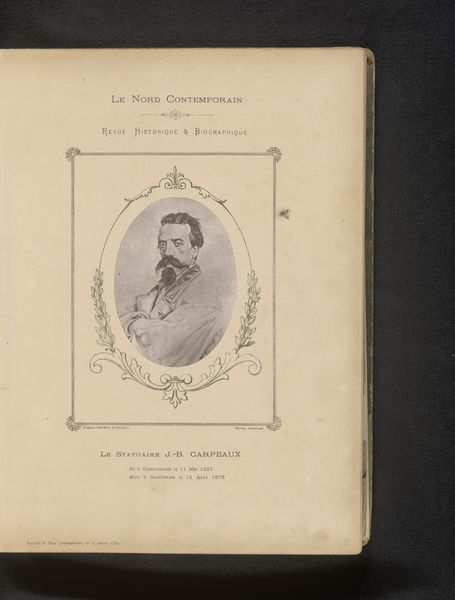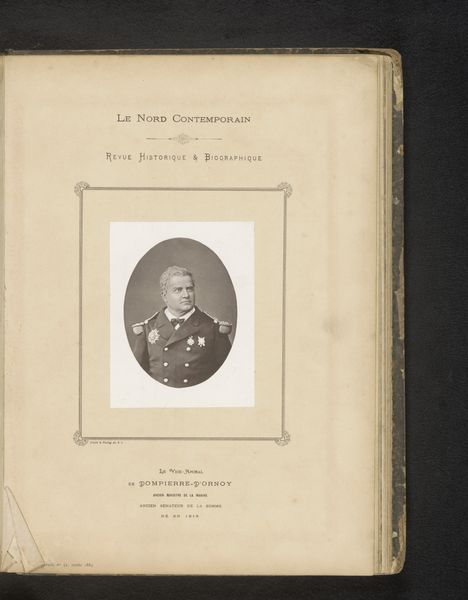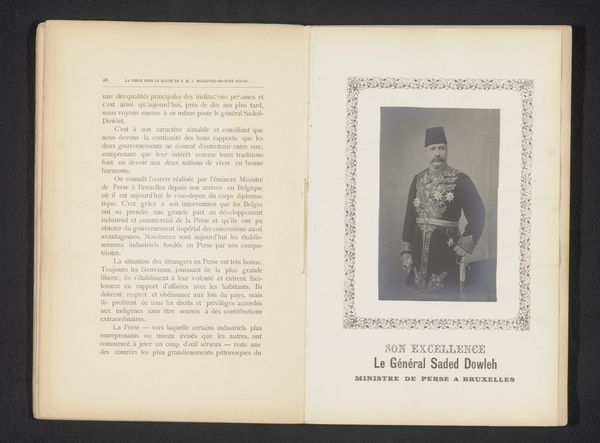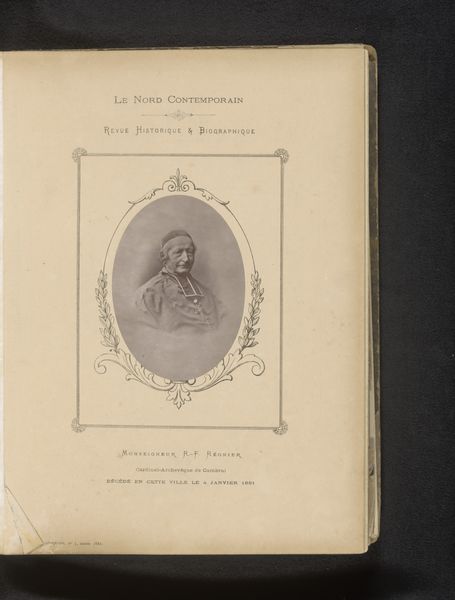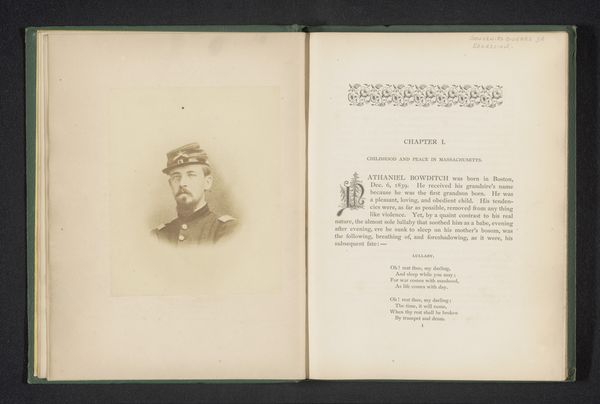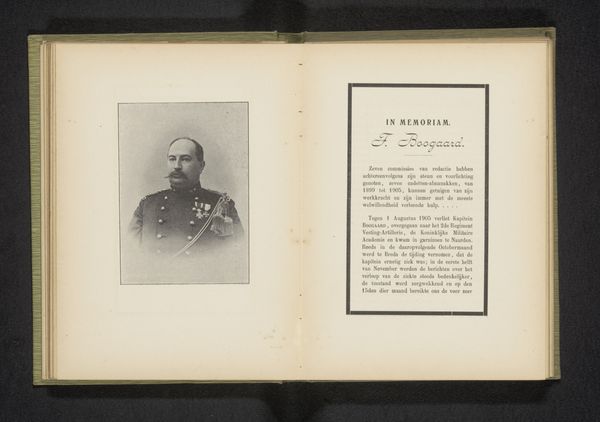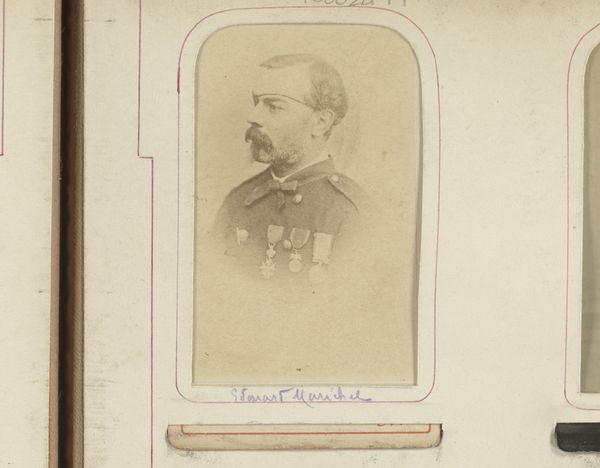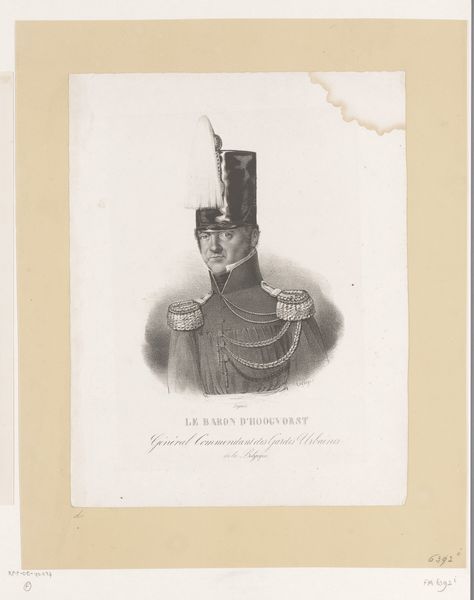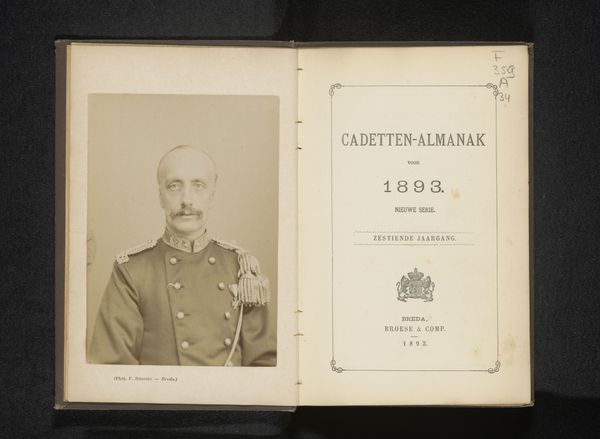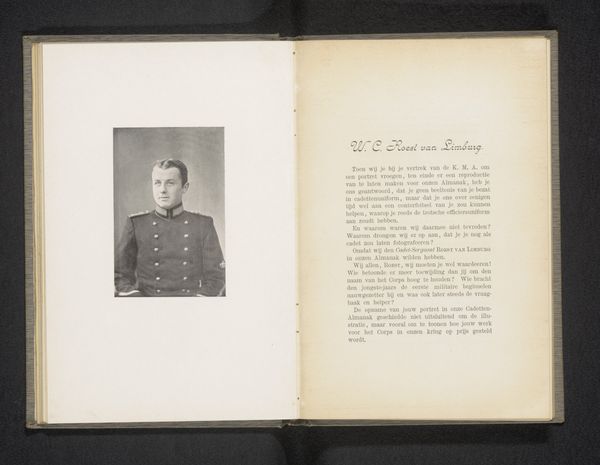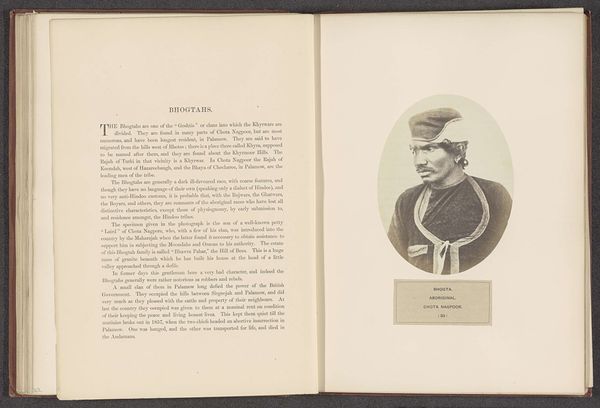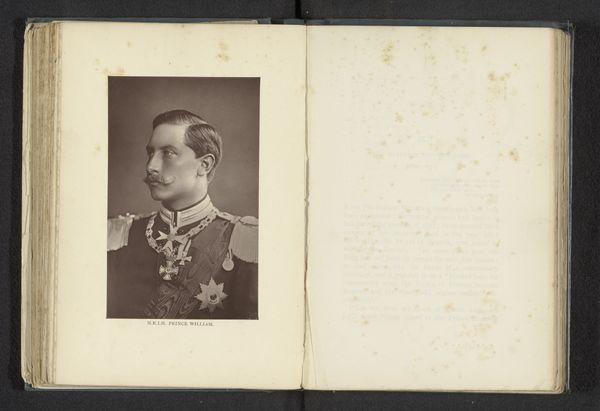
Dimensions: height 125 mm, width 94 mm
Copyright: Rijks Museum: Open Domain
Editor: This is an albumen print, so a photograph, titled *Portret van generaal Louis Faidherbe,* made before 1882. The general’s formal attire and severe expression certainly communicate power, but what more can we unpack here? Curator: Well, looking at this portrait of General Faidherbe, we can't ignore the context of French colonialism. Faidherbe was a key figure in the colonization of Senegal. How does seeing his portrait through that lens change our understanding of his image and the purpose of creating such an object? Editor: I hadn't considered it that way at first. It does complicate the reading; it’s not simply a portrait of a high-ranking official but a statement of imperial power. Curator: Exactly. Photography during this period was often used as a tool to document and reinforce colonial narratives. Portraits like these were circulated to project an image of authority and control. Who was this image intended for and what values were it meant to convey? Editor: So, the choice of clothing, the stern pose, all contribute to a constructed image of a powerful figure meant to legitimize colonial rule? Curator: Precisely. Consider how the romantic or academic artistic styles, seemingly innocent choices, also participated in those social and political projects by creating idealized and palatable images of colonial figures. Editor: I see your point. The photograph, seemingly a straightforward portrait, becomes much more complex once you consider the historical context and how images were used to perpetuate colonial power. I hadn't thought about it that way before. Curator: And understanding those contexts allows us to engage more critically with the art we see. There is much to learn about power and representation.
Comments
No comments
Be the first to comment and join the conversation on the ultimate creative platform.
